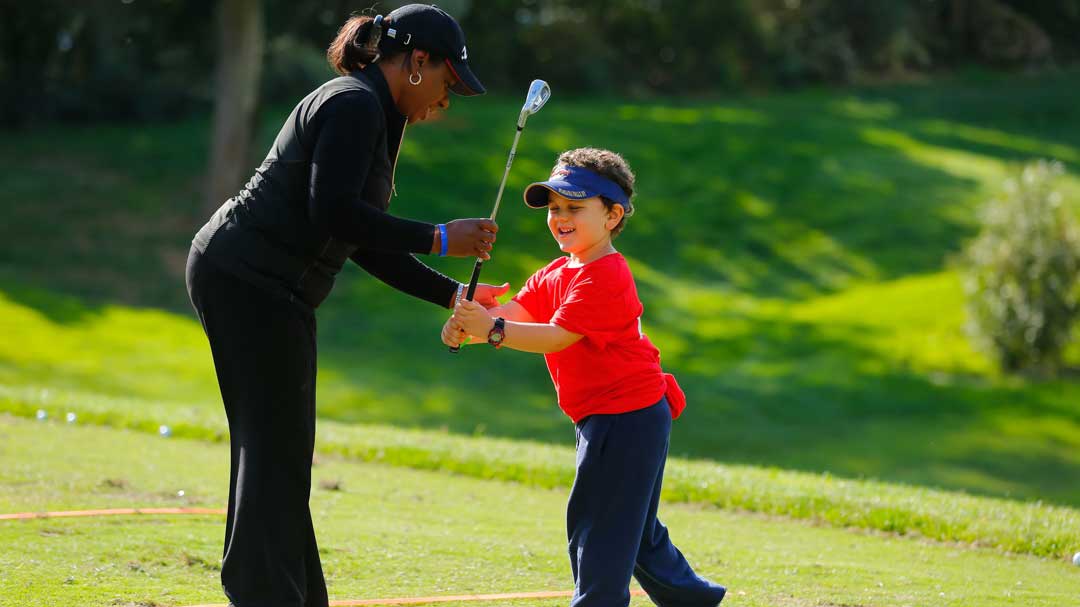Stepping onto the green, feeling the warm sun and the gentle breeze, and holding the potential to shape the future of golfers in your hands. Such is the enchanting allure of becoming a golf instructor. But how do you turn this passion into a fulfilling career? Let’s delve into the world of golf teacher certification and discover the route to make this dream a reality.
Requirements for Golf Teacher Certification

Venturing into the realm of golf teacher certification and instruction demands more than just love for the sport. Foremost, aspiring educators need to be equipped with a strong foundation in golf. Most certifying bodies necessitate a certain handicap, usually ensuring that you’re skilled enough to lead by example. On top of that, a high school diploma or its equivalent is typically a basic requisite.
Yet, the world of golf instruction doesn’t merely focus on one’s ability to play. Physical endurance, understanding the sport’s history, and possessing a rudimentary knowledge of biomechanics are equally essential. Some institutions may even ask for proof of the latter through courses or workshops, ensuring you are well-rounded and holistic in your teaching approach.
The Certification Process
Embarking on the certification journey involves a combination of theoretical understanding and practical assessment. Primarily, there are written exams that cover various facets of the game, from its history to the rules and even the physics behind swings. Successfully navigating these evaluations solidifies your theoretical grounding.
Once you’ve conquered the written tests, the practical phase awaits. This involves demonstrating your playing prowess, your teaching skills, and sometimes even crafting lesson plans. Being evaluated in a real-time teaching scenario can be challenging, but it ensures that certified instructors are not just theoretically sound but also practically proficient.
Developing Expertise in Golf Instruction
Expertise doesn’t flourish overnight. Continual learning is essential. Some of the best golf educators frequently attend seminars and workshops, and even take advanced courses to deepen their understanding. They remain updated on the latest techniques, technologies, and tools available in the industry.
Yet, growing one’s expertise isn’t solely an individual endeavor. Engaging with a community of instructors, sharing experiences, and learning from others can significantly bolster one’s teaching prowess. A shared lesson learned or a unique technique discovered can make all the difference in the classroom.
Gaining Practical Teaching Experience

While certification opens doors, real-world experience is the key to unlocking true mastery. Newly certified instructors benefit immensely from apprenticeships or assisting seasoned professionals. Such stints provide hands-on experience, revealing nuances and intricacies that theory often skips.
Practical exposure isn’t restricted to formal settings. Offering lessons to friends, and family, or even volunteering at local schools can be incredibly rewarding. Such experiences not only refine your teaching methods but also mold you into a more patient and adaptable instructor.
Building a Strong Teaching Philosophy
Every notable instructor possesses a unique teaching philosophy. Defining your values, methods, and goals as an educator shapes your identity. A clear philosophy aids in fostering trust and creating a consistent learning environment for your students.
But philosophy isn’t a static entity. As you grow and evolve, so should your teaching ethos. Be open to revising, refining, and even overhauling your beliefs. A dynamic philosophy that adapts to changing times and diverse students is often the most effective.
Effective Communication and Instruction Techniques
Golf is as much mental as it is physical. Being a brilliant player doesn’t necessarily translate into being an exceptional teacher. The crux lies in communicating intricate concepts simply. Adapting your language to suit different learners, using visual aids, or even leveraging technology can make concepts more palatable.
Instruction isn’t solely about conveying ideas. It’s equally about listening. Paying keen attention to students’ feedback, understanding their pain points, and tailoring your methods to address individual needs ensures a fruitful learning journey.
Navigating the Job Market for Golf Teachers
Entering the world of golf instruction is exhilarating, yet the path can be labyrinthine. Crafting an impressive resume, highlighting not just your certification but also your unique teaching approach, can set you apart. Networking, attending industry events, and building connections with established professionals can provide insights and opportunities.
Yet, in this digital age, one can’t underestimate the power of online platforms. Establishing a digital presence, be it through a personal website, social media, or even online teaching platforms, can greatly amplify your reach and credibility.
Career Opportunities for Certified Golf Teachers
Once certified, a plethora of opportunities unfurls. Beyond traditional golf schools and private clubs, cruise ships, resorts, and even corporate retreats often seek skilled instructors. Such roles not only offer a lucrative income but also the chance to travel and experience diverse cultures.
For those keen on a more stable environment, establishing a private coaching business can be both rewarding and profitable. With the rising popularity of golf, the demand for dedicated and proficient teachers is on an upswing. Capitalize on this trend, and you could build a lasting and impactful career.
Working with Different Age Groups and Skill Levels

Teaching golf isn’t a one-size-fits-all proposition. Instructors are often faced with the challenge of catering to varied age groups and skill levels. For young enthusiasts, the focus may shift towards fostering a love for the game, using creative techniques, and developing basic skills. Patience and adaptability play crucial roles in engaging the younger generation.
With adult learners, the challenges evolve. Some may be total beginners, while others could be seasoned players seeking to hone specific skills. As an instructor, assessing individual capabilities, setting realistic goals, and crafting personalized approaches becomes essential.
Creating Engaging Lesson Plans
The art of crafting engaging lesson plans goes beyond mere knowledge of the sport. It’s a careful orchestration of goals, activities, and assessments, all sewn together with a thread of excitement and curiosity. Creative and varied lessons can make even the most mundane drills thrilling. Utilizing multimedia, introducing competitive elements, or even leveraging storytelling can inject vibrancy into your classes.
However, even the most creative lesson plan must be rooted in solid learning objectives and assessment criteria. Aligning your lessons with specific skills, constantly monitoring progress, and being open to tweaking or entirely reshaping your plans ensures that they remain effective.
Final Thoughts
Transforming a fervor for golf into a meaningful profession is no mean feat. But with the right guidance, unwavering dedication, and a touch of flair, the journey can be as rewarding as the destination. As you stand at the precipice of this exciting venture, remember, the game of golf isn’t just about perfect swings but also about imparting a love for the sport to the next generation.





